Charcuterie boards have become a staple at parties, gatherings, and even solo snacking sessions. And while the quality of the meats, cheeses, and other accompaniments is undoubtedly important, one often overlooked element can make or break the experience: the crackers. The right crackers can complement the flavors and textures of the charcuterie components, adding crunch, depth, and contrast. But with so many options out there, how can you choose the best crackers for your charcuterie board?
Choosing the right crackers can be a daunting task, with so many options available on the market. That's where this guide comes in – to help you navigate the overwhelming sea of crackers and choose the best ones for your charcuterie board. Whether you're a seasoned pro or a newbie to the charcuterie game, this guide will provide you with everything you need to know to select the perfect crackers for your board. So, without further ado, let's dive into the world of crackers and discover which ones will take your charcuterie board to the next level!
TIP: Fast-track your charcuterie skills and connect with 514K experts. Click for instant access to our comprehensive guide and community >>
Table of Contents [CLICK HERE TO OPEN]
- Understanding the Basics of Charcuterie Boards
- Factors to Consider When Choosing Crackers for Your Charcuterie Board
- Top Picks for the Best Crackers for Charcuterie Boards
- Serving Suggestions and Pairings
- Wrapping It Up
- Frequently Asked Questions
- What kind of crackers are best for charcuterie board?
- Should crackers go on a charcuterie board?
- How many crackers do you need for a charcuterie board?
- Can you use Ritz crackers in charcuterie board?
- Can you put crackers on charcuterie board night before?
- How do you keep crackers from getting soggy on charcuterie board?
- How do you display crackers on a charcuterie board?
Understanding the Basics of Charcuterie Boards
If you're new to the world of charcuterie boards, let's start with the basics. A charcuterie board is a platter of cured meats, cheeses, fruits, nuts, and crackers that are artfully arranged to create a visually appealing and delicious spread. The word “charcuterie” comes from the French term for prepared meat products, and these boards have been around for centuries.

When creating a charcuterie board, it's important to select components that complement each other. For example, if you're including salty cured meats like prosciutto, you might want to add sweet fruits like figs or grapes to balance out the flavors. Cheese selection is also important, as different types of cheeses have varying tastes and textures.
Now, let's talk about crackers. While meats and cheeses might be the stars of the show, crackers play a crucial role in providing a neutral canvas for other flavors to shine. They also add texture and crunch to the board, which is important when you're dealing with mostly soft or creamy foods.
When selecting crackers for your charcuterie board, it's important to keep in mind the other components that will be on the board. For example, if you're including a spicy salami, you might want to choose a neutral cracker like a water cracker or a plain rice cracker, so as not to overpower the spiciness. On the other hand, if you're including a milder cheese like brie, you might want to choose a more flavorful cracker like a rosemary and olive oil cracker to add a bit of depth.
In short, crackers might seem like a small detail, but they can make a big difference in the overall taste and presentation of your charcuterie board. So, take your time when selecting crackers and choose ones that will complement the other components on your board.
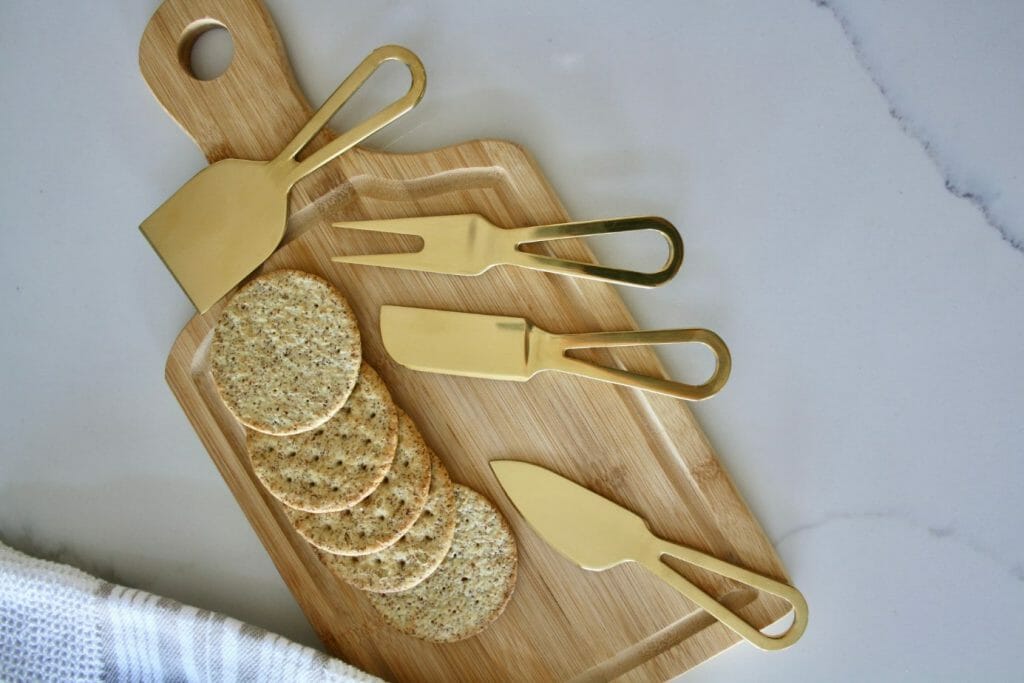
Factors to Consider When Choosing Crackers for Your Charcuterie Board
When it comes to choosing the perfect crackers for your charcuterie board, there are a few important factors to keep in mind.
Texture:
- The texture of the cracker can greatly impact the overall experience of the board.
- Consider the level of crunchiness, chewiness, and thickness when choosing your crackers.
- Soft or flaky crackers may crumble easily when topped with meats or cheeses, while overly hard crackers may be difficult to bite into.
Flavor:
- It's essential to choose crackers that complement or contrast with the other components on the board.
- Consider pairing milder crackers with stronger, more flavorful cheeses and meats.
- Experiment with different types of crackers, such as those flavored with herbs, spices, or even fruits, to add an extra layer of complexity to the board.
Shape and Size:
- The shape and size of crackers can affect both the visual appeal and practicality of the board.
- Larger crackers can be used as a base for toppings or as a vessel for spreading cheeses.
- Smaller crackers can be more versatile, allowing for more creative pairing combinations and easier snacking.
- Consider mixing up the shapes and sizes of crackers to add visual interest to the board.
Dietary Restrictions:
- It's important to consider the dietary needs and restrictions of your guests when choosing crackers for your board.
- Look for gluten-free, vegan, or other specialized options to accommodate those with dietary restrictions.
- Make sure to label any crackers or other components that may contain common allergens, such as nuts or dairy, to ensure the safety of all guests.
By keeping these factors in mind when selecting crackers for your charcuterie board, you can create a well-balanced and enjoyable experience for all of your guests.

Top Picks for the Best Crackers for Charcuterie Boards
When it comes to selecting the best crackers for your charcuterie board, there are plenty of options to choose from. Here are ten of the top picks that will help elevate your board to the next level:
Water crackers
These thin, crisp crackers are a classic choice that won't overpower the other components on your board. They're versatile enough to pair well with a variety of meats, cheeses, and spreads.

Rosemary crackers
These crackers add a subtle herbal flavor to your board that pairs well with a variety of meats and cheeses. Their unique flavor and texture make them a standout choice.

Multigrain crackers
For those who want a little extra crunch and texture, multigrain crackers are a great option. They're often made with whole grains and seeds, giving them a nutty and savory flavor.

Sesame crackers
Sesame crackers are a great choice for those who want a little extra flavor on their board. The nutty taste of sesame pairs well with a variety of cheeses and meats.

Wheat crackers
Wheat crackers are a sturdy and reliable option that pair well with a variety of spreads and cheeses. They have a slightly nutty flavor and a satisfying crunch.
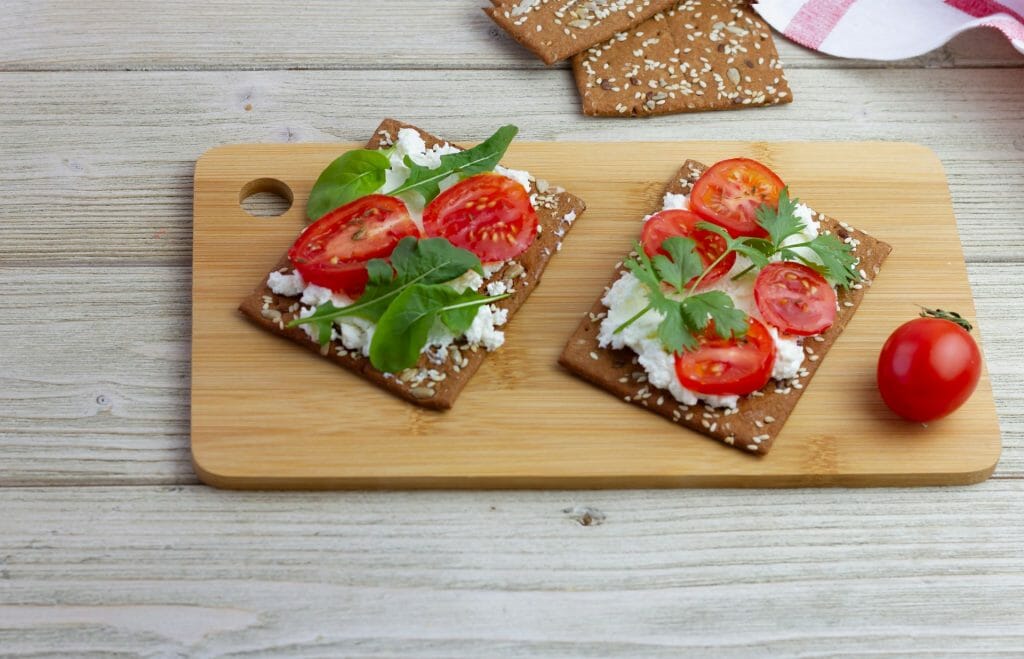
Flatbread crackers
These thin, crispy crackers are a great alternative to traditional water crackers. They're often flavored with herbs and spices and can be topped with a variety of spreads and meats.
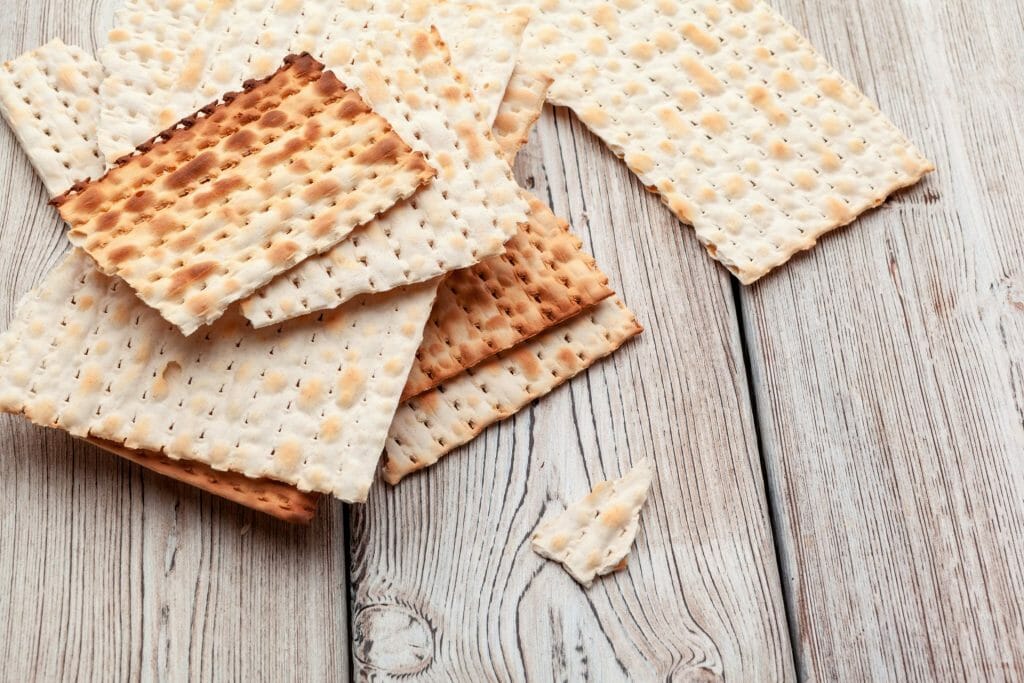
Rye crackers
Rye crackers have a distinctive, slightly sour taste that pairs well with strong cheeses and cured meats. They're often denser and heartier than other crackers.

Cheese crackers
If you're looking for a cracker that packs a lot of flavor on its own, cheese crackers are a great choice. They're often made with real cheese and have a rich, savory taste.

Whole grain crackers
Whole grain crackers are a great option for those who want a healthier choice that's still delicious. They're often made with a mix of whole grains and seeds, giving them a nutty and satisfying flavor.

Gluten-free crackers
For those with dietary restrictions, gluten-free crackers are a great choice. There are many options available that are made with alternative flours and still taste delicious.
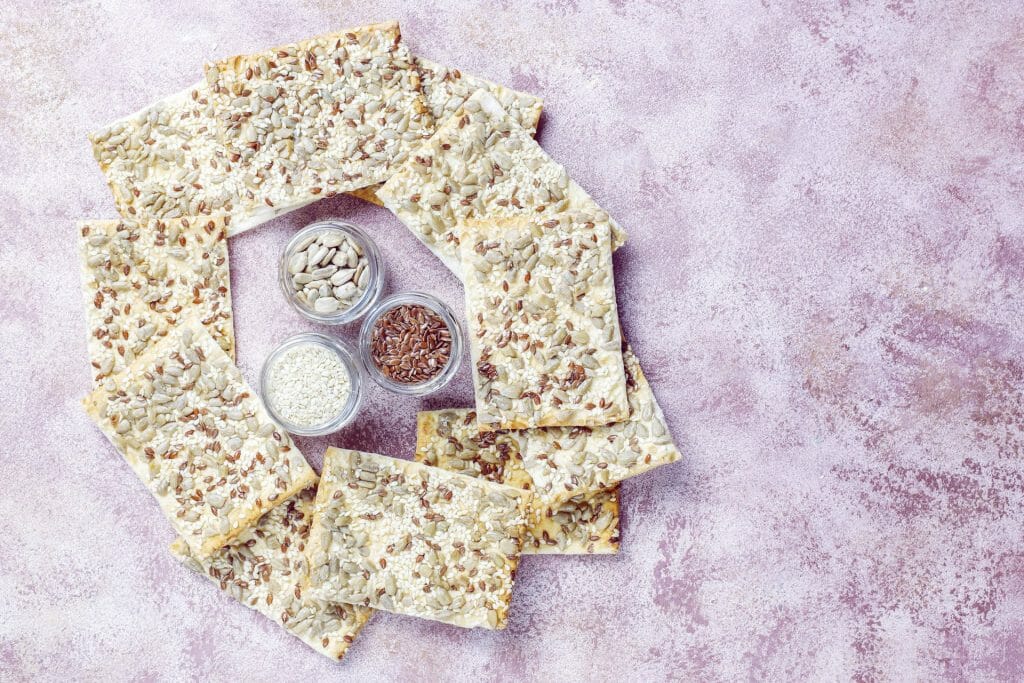
Overall, the best crackers for charcuterie boards are those that complement and enhance the other components on the board. Consider the texture, flavor, shape, and dietary restrictions when selecting your crackers to create a beautiful and delicious board. Don't forget to include a variety of options to cater to different tastes and preferences.
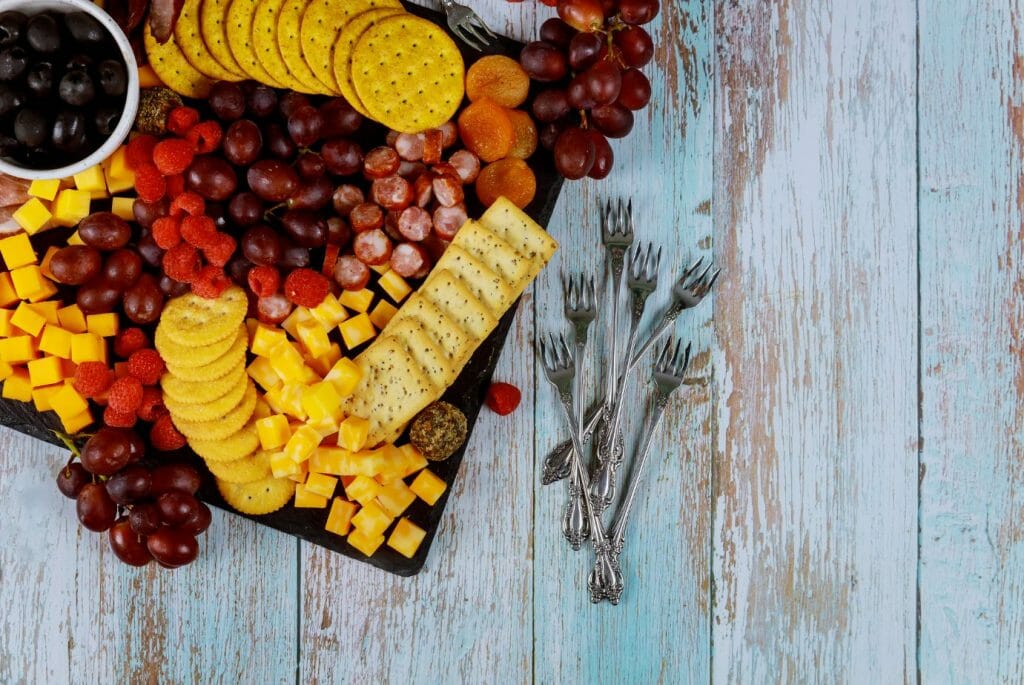
Serving Suggestions and Pairings
Now that you have selected the perfect crackers for your charcuterie board, it's time to think about how to serve them. The way you arrange and present the crackers can make a big difference in how they are enjoyed. Here are a few tips to help you make the most of your crackers:
Placement and arrangement:
Consider placing the crackers strategically around the board, making sure they are easily accessible and visible. You can also use different shapes and sizes of crackers to create visual interest and variety.
Pairings:
Each cracker on your board has unique flavors and textures that can be enhanced by pairing them with specific meats, cheeses, or spreads. Here are some classic pairings to get you started:
- Water crackers: These are versatile and can be paired with a variety of cheeses, such as brie, goat cheese, or gouda. They also go well with cured meats like prosciutto or salami.
- Rye crisps: Their bold flavor and sturdy texture make them a great match for strong cheeses like blue cheese or aged cheddar. They also pair well with pâtés or smoked salmon.
- Whole wheat crackers: These are a great choice for pairing with milder cheeses like chèvre or havarti. They also go well with thinly sliced prosciutto or smoked turkey.
- Rice crackers: These have a subtle flavor and are a great option for pairing with bold cheeses like asiago or parmesan. They also pair well with hummus or roasted red pepper dip.
- Flatbread crackers: These have a crispy texture and are perfect for pairing with creamy cheeses like boursin or camembert. They also go well with charcuterie meats like prosciutto or speck.
- Woven wheat crackers: These have a nutty flavor and are a great choice for pairing with hard, salty cheeses like pecorino or manchego. They also pair well with honey or fig jam.
- Pretzel crisps: These have a salty flavor and are a great choice for pairing with creamy cheeses like gouda or brie. They also go well with spicy mustards or beer cheese dips.
- Cornbread crisps: These have a slightly sweet flavor and are a great option for pairing with tangy cheeses like goat cheese or feta. They also pair well with spicy or smoky meats like chorizo or pepperoni.
- Vegetable crackers: These are a healthy option for pairing with fresh, light cheeses like ricotta or mozzarella. They also go well with hummus or tzatziki.
- Sourdough crackers: These have a tangy flavor and are a great choice for pairing with soft, buttery cheeses like camembert or boursin. They also go well with cured meats like prosciutto or soppressata.
Get creative:
Don't be afraid to experiment with your own pairings and share your ideas in the comments section. You might discover a new favorite combination that you never would have thought of before.
By following these tips and pairing your crackers with the right meats, cheeses, and spreads, you can create a delicious and visually appealing charcuterie board that will impress your guests and leave them coming back for more.
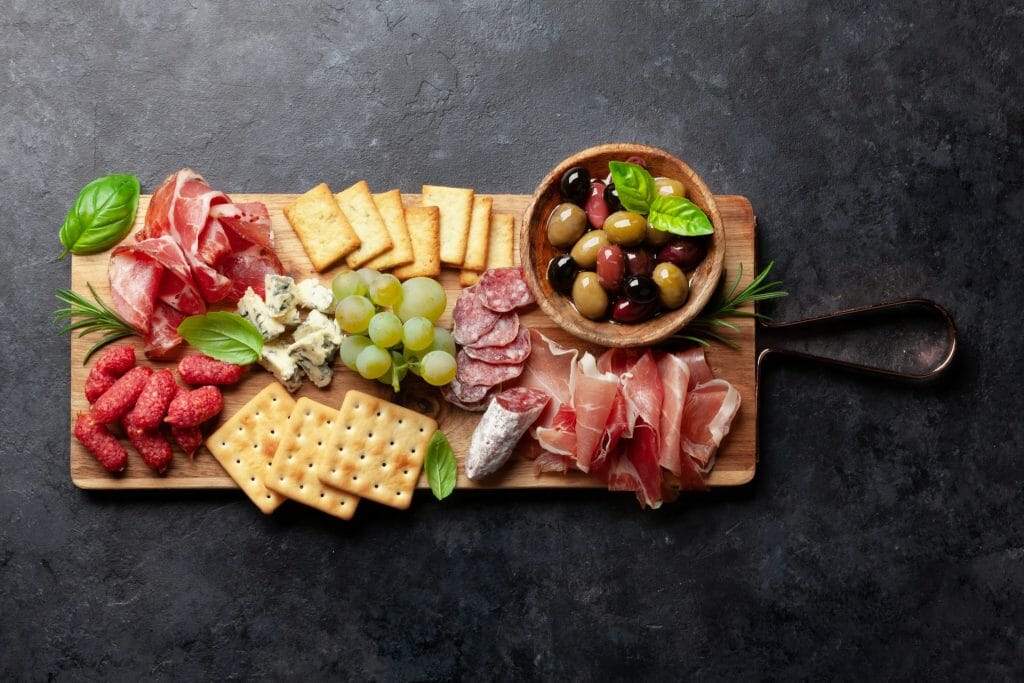
Wrapping It Up
In conclusion, choosing the right crackers for your charcuterie board can elevate the entire experience. By understanding the basics of charcuterie boards and considering factors such as texture, flavor, shape and size, and dietary restrictions, you can choose the perfect crackers to complement the other components on the board.
We also provided a list of the top ten crackers commonly used in charcuterie boards, along with their unique features and flavors. When serving your charcuterie board, make sure to arrange the crackers in an aesthetically pleasing way and consider pairing them with specific cheeses, meats, or spreads that complement their flavors.
We encourage you to get creative and experiment with different types of crackers, as well as share your own experiences and ideas in the comments section. And don't forget to check out our other articles for more charcuterie board inspiration and ideas. Happy snacking!

Frequently Asked Questions
What kind of crackers are best for charcuterie board?
The best crackers for a charcuterie board are those that complement the flavors and textures of the other components on the board. Some popular options include water crackers, sourdough crackers, and whole wheat crackers. It's also a good idea to choose crackers with different shapes and sizes to add visual interest to the board. Finally, make sure to choose crackers that are sturdy enough to hold toppings without breaking or crumbling.
Should crackers go on a charcuterie board?
Yes, crackers are a staple component of a charcuterie board, as they provide a complementary texture and flavour to the meats, cheeses, and other accompaniments. Crackers can be used to balance out the rich and salty flavours of the charcuterie, and also provide a vehicle for spreading soft cheeses or dips. When selecting crackers for a charcuterie board, it's important to consider their texture, flavour, and size, as well as their compatibility with the other components of the board.
How many crackers do you need for a charcuterie board?
For a small charcuterie board, plan for about 4-6 crackers per person. For a larger board, plan for about 8-10 crackers per person. It's better to have more than not enough. Keep in mind that the amount of crackers you need will also depend on the size of the crackers and the overall size of the board.
Can you use Ritz crackers in charcuterie board?
Yes, you can use Ritz crackers in a charcuterie board. However, keep in mind that the crackers you choose should complement the other items on the board. Ritz crackers have a buttery flavor that can pair well with cheese, meat, and other toppings commonly found on a charcuterie board. It's ultimately up to your personal preference and taste, so feel free to experiment with different types of crackers to find the perfect fit for your board.
Can you put crackers on charcuterie board night before?
Yes, you can put crackers on a charcuterie board the night before. However, it's important to store the board properly to prevent the crackers from getting stale or soft. You can cover the board with plastic wrap or place it in an airtight container and store it in the refrigerator. It's recommended to add any dips or spreads right before serving to prevent them from drying out.
How do you keep crackers from getting soggy on charcuterie board?
To keep crackers from getting soggy on a charcuterie board, try to avoid placing wet or oily ingredients on top of them. You can also place the crackers in a separate dish or container, or serve them in smaller amounts and refill as needed to prevent them from sitting out for too long. Storing crackers in an airtight container or zip-top bag can also help maintain their crispness.
How do you display crackers on a charcuterie board?
To display crackers on a charcuterie board, you can place them in small piles or arrange them in a neat row. It's important to keep them separate from wet or oily ingredients to prevent sogginess. You can also use small bowls or ramekins to hold the crackers and prevent them from moving around. Additionally, you can incorporate different shapes and sizes of crackers to add visual interest to the board.
Share Your Creations:
We’d love to see the charcuterie boards you create using our guide! Feel free to share your own creations in the comments or on social media, and tag us for a chance to be featured. And if you have any other ideas or tips for creating the perfect charcuterie board, we’d love to hear them.







